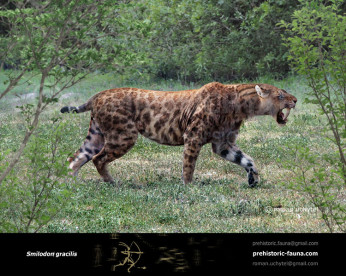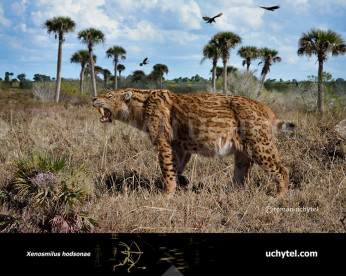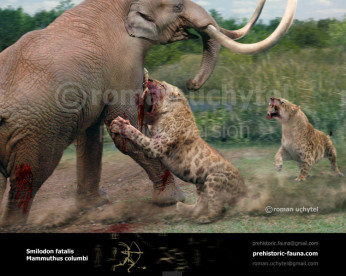Smilodon fatalis
29342934Smilodon (Smilodon fatalis Leidy, 1869)
Order: Carnivora
Family: Felidae
Subfamily: †Machairodontinae
Tribe: †Smilodontini
Size: 1,9 meters long, 1,1 meters tall at the shoulder. Weight estimated at up to 300 kg.
Time period: Throughout the Pleistocene, till the very early Holocene (North America.).
Smilodon fatalis was the saber-tooth cat (popularly known as the saber-tooth tiger). It was a fierce predator about 1.5-1.9 metres long and 1.1 metres tall. It weighed 160 - 300 kg. It was a bit smaller than a modern-day lion, but much heavier. It had relatively short legs and a short, bobbed tail a bit like that of a modern-day Bobcat which is why it is called that because of its bob-like tail. Its front legs were especially powerful and its body was adapted for springing onto prey, but it was not a very fast runner and could not be adapted for chasing after fast running prey like deer.
Its 30 cm skull had 2 huge sabre-like canine teeth and these were serrated, oval in cross-section, and up to 15 cm long. Many Smilodon fossils have been found with broken canines; a fossil wolf was found with a Smilodon tooth fragment embedded in its skull. Smilodon had powerful jaws that opened to an angle of about 120 degrees while on the other hand, todays lions can only open their jaws at 65 degrees. Smilodon also had very strong jaw and neck muscles that let it stab prey with its deadly maxillary canine sabre teeth. Its front incisor teeth may also have been used to wrip away strips of flesh from the bones of its prey.
Smilodon (Smilodon fatalis Leidy, 1869)
Order: Carnivora
Family: Felidae
Subfamily: †Machairodontinae
Tribe: †Smilodontini
Size: 1,9 meters long, 1,1 meters tall at the shoulder. Weight estimated at up to 300 kg.
Time period: Throughout the Pleistocene, till the very early Holocene (North America.).
Smilodon fatalis was the saber-tooth cat (popularly known as the saber-tooth tiger). It was a fierce predator about 1.5-1.9 metres long and 1.1 metres tall. It weighed 160 - 300 kg. It was a bit smaller than a modern-day lion, but much heavier. It had relatively short legs and a short, bobbed tail a bit like that of a modern-day Bobcat which is why it is called that because of its bob-like tail. Its front legs were especially powerful and its body was adapted for springing onto prey, but it was not a very fast runner and could not be adapted for chasing after fast running prey like deer.
Its 30 cm skull had 2 huge sabre-like canine teeth and these were serrated, oval in cross-section, and up to 15 cm long. Many Smilodon fossils have been found with broken canines; a fossil wolf was found with a Smilodon tooth fragment embedded in its skull. Smilodon had powerful jaws that opened to an angle of about 120 degrees while on the other hand, todays lions can only open their jaws at 65 degrees. Smilodon also had very strong jaw and neck muscles that let it stab prey with its deadly maxillary canine sabre teeth. Its front incisor teeth may also have been used to wrip away strips of flesh from the bones of its prey.

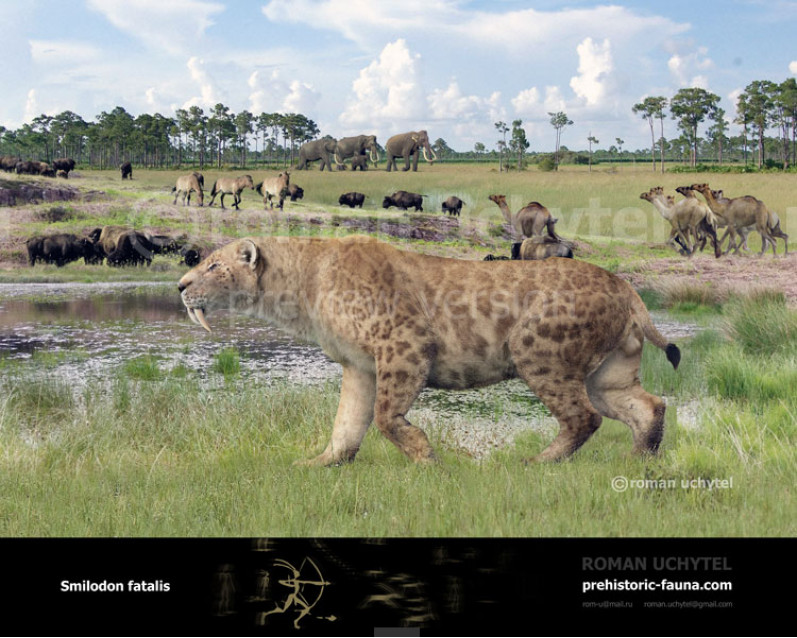
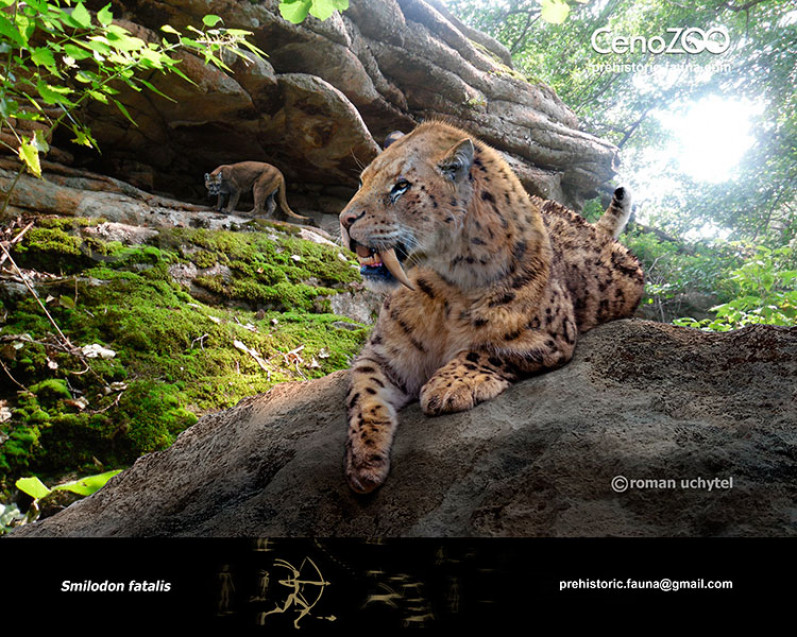
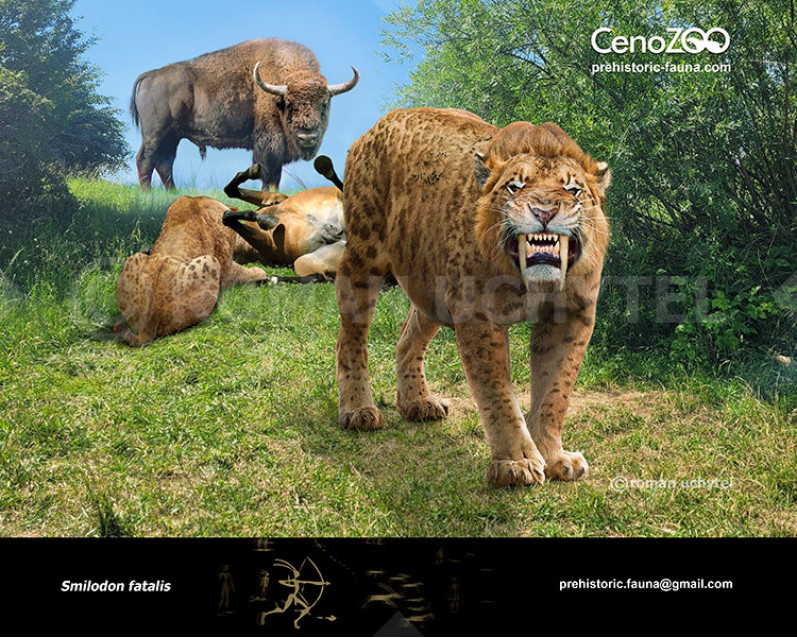
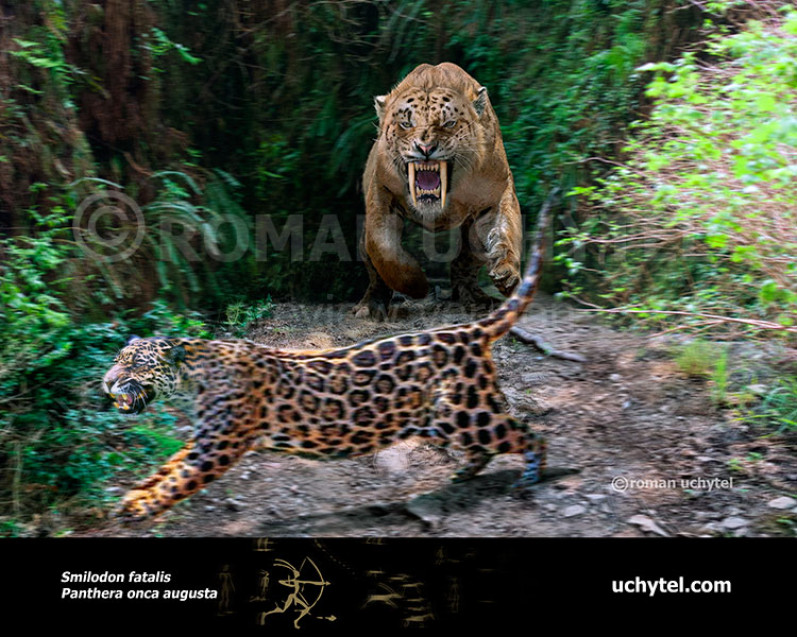
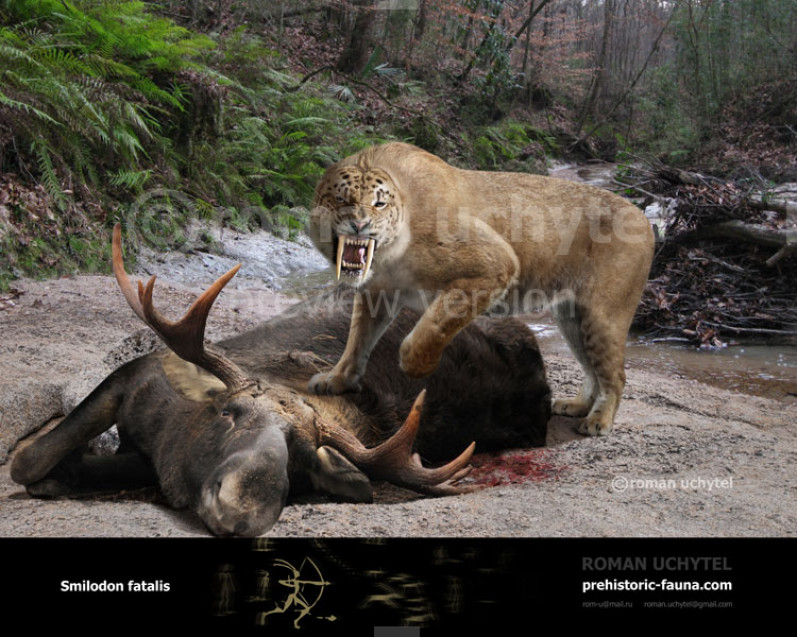
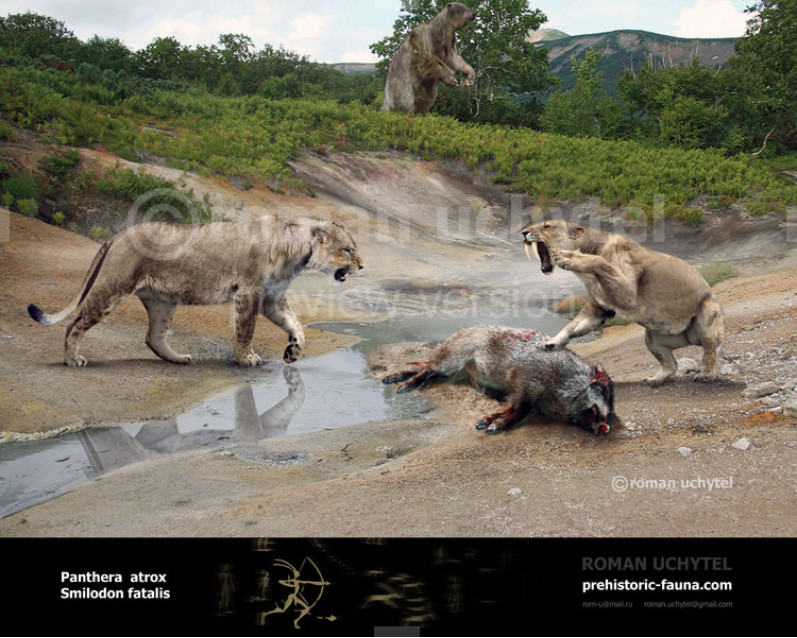
-797x638.jpg)
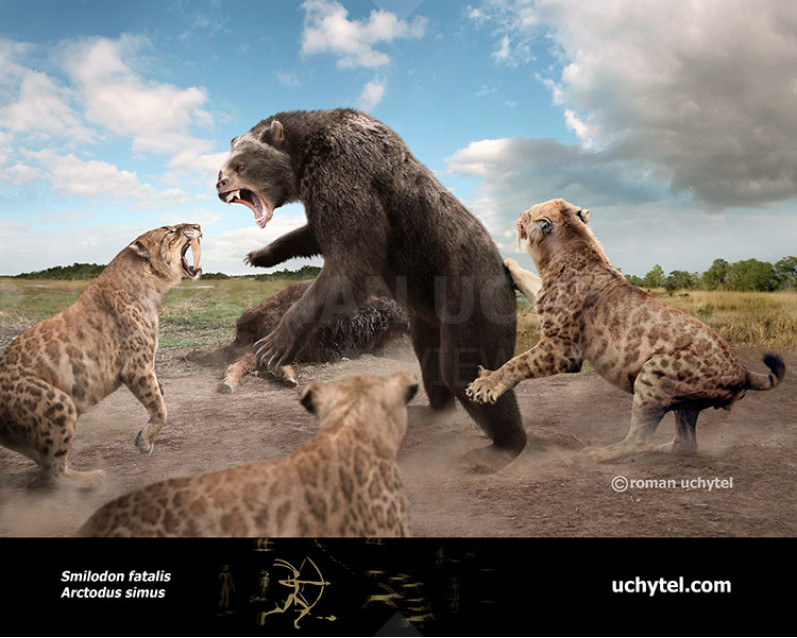

-797x638.jpg)
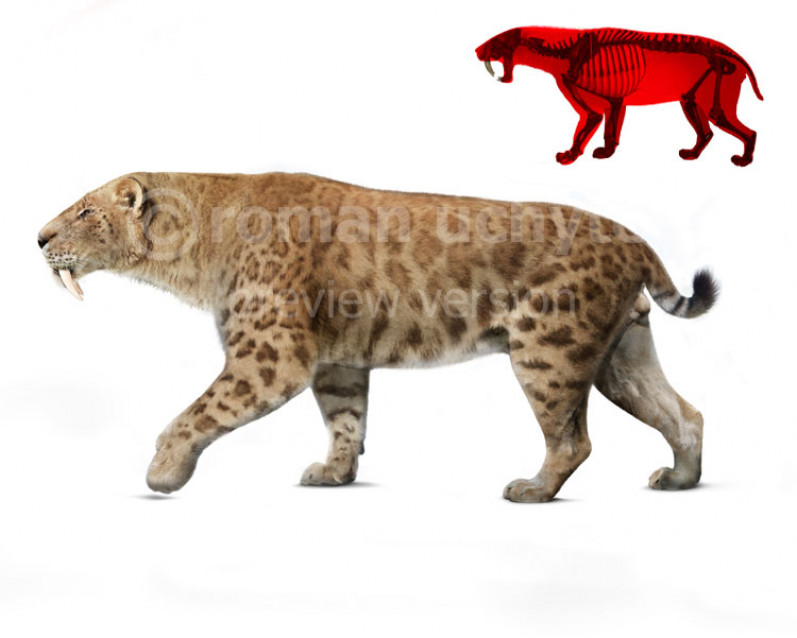
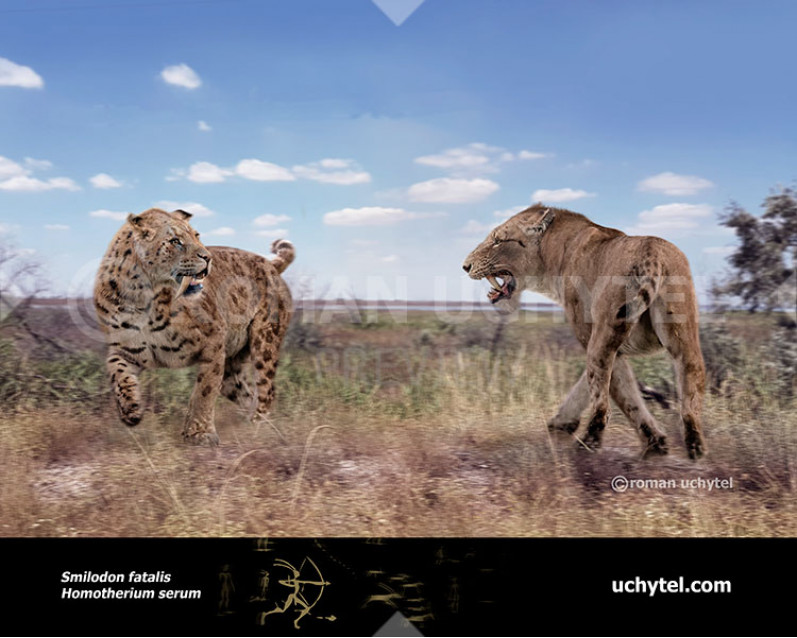

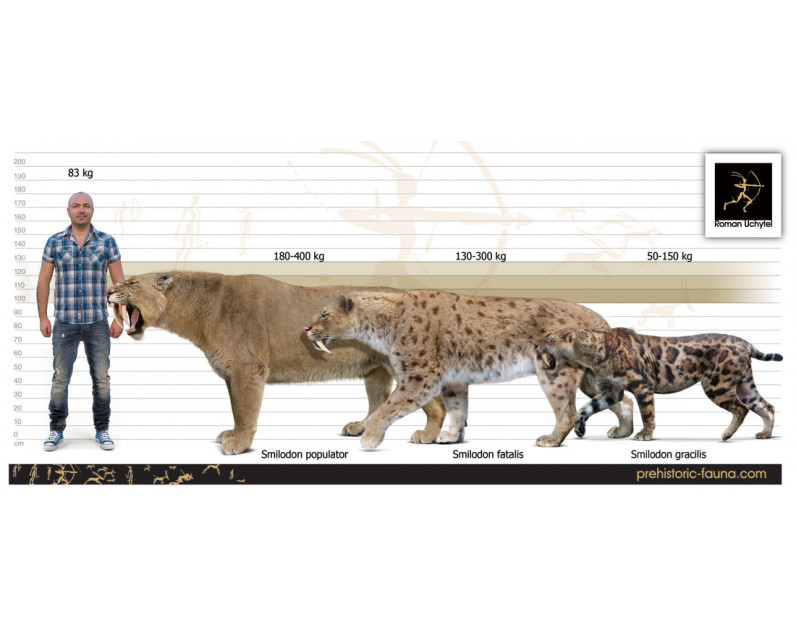






-70x56.jpg)


-70x56.jpg)




-346x277.jpg)
